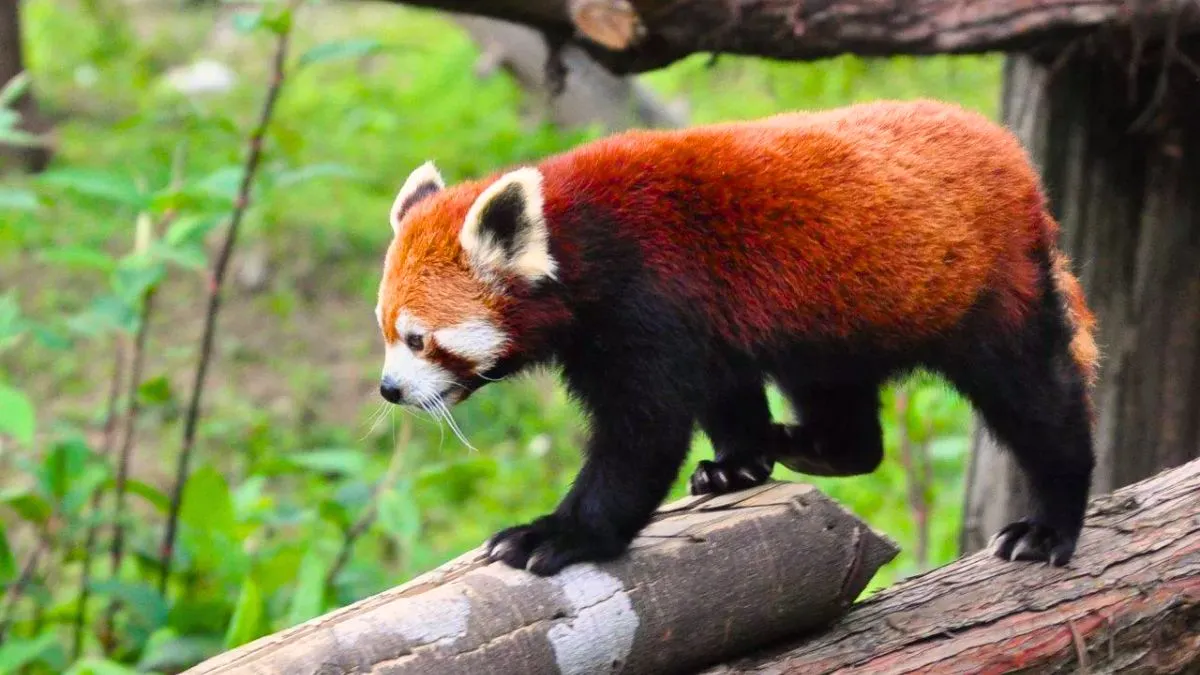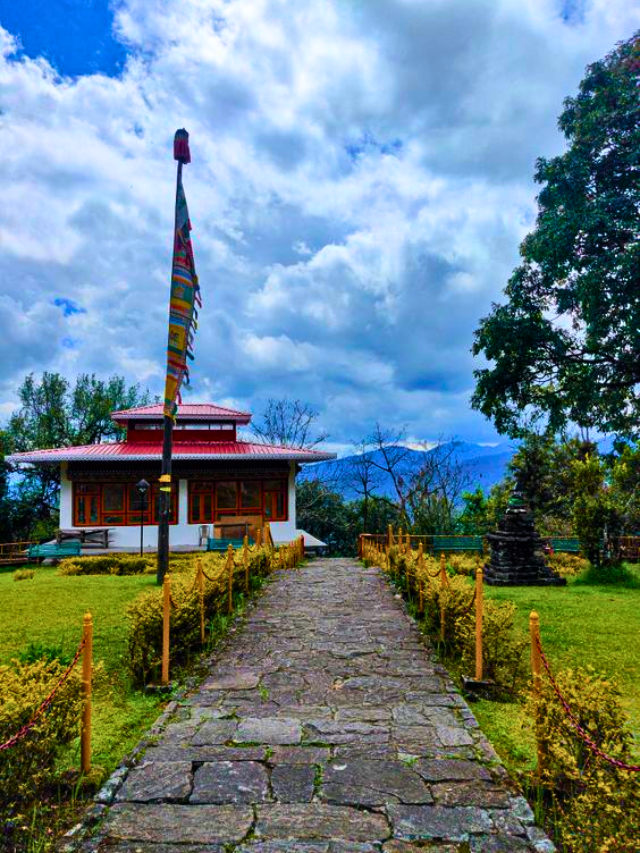If you are visiting Gangtok and want to see some special and unique wildlife that you might not find anywhere else, then Gangtok Zoo, also known as Himalayan Zoological Park Gangtok, is a must visit.
You may have heard its name many times. Located at an altitude of 1,780 meters, it is the only zoo in Sikkim and one of the few zoos in India where animals are allowed to live in their natural environment, in open spaces.
The zoo is open daily from 9:00 AM to 4:00 PM and the entry fee for Indian adults is Rs. 25 and Rs. 10 for children. For foreigners, it is Rs. 50 per person. If you are carrying a still camera, there may be an additional charge.
Some of the rare Himalayan wildlife makes this place really special. You’ll see animals like the red panda (the star of the zoo), the snow leopard, the Himalayan black bear, the blue sheep, the musk deer and the monals (the colourful Himalayan bird). These animals live in vast, hilly forests that resemble their natural habitat the good thing is that when you see them you won’t be surprised that they are caged.
Located just 3 km from MG Marg, the Himalayan Zoological Park is easy to cover from Gangtok by taxi or even on foot,
So let’s discover and know some interesting things about the amazing wildlife spot in gangtok
Table of Contents
Entry Fee and Timings
Opening Hours:
- Daily: 9:00 AM to 4:00 PM
- Closed on: Thursdays
Entry Fees:
- Indian Adults: ₹25
- Indian Children: ₹10
- Foreign Tourists: ₹50
Vehicle Entry (if applicable):
- Small Vehicle: ₹40
- Large Vehicle (e.g., SUV): ₹100
Note: Vehicle entry is optional and may depend on current park policies.
Gangtok to Himalayan Zoological Park Distance
The Himalayan Zoological Park is located in Bulbuley, just 3 to 6 km from the main areas of Gangtok.
- By Taxi: Around 15–20 minutes from MG Marg.
- By Foot: About a 30–40 minute walk uphill from nearby spots like Ganesh Tok.
- By Private Car: You can drive up; vehicle entry is ₹40 for small cars and ₹100 for larger ones.
About Himalayan Zoological Park Gangtok
The Himalayan Zoological Park is managed by the Sikkim Forest Department and was established in 1991. Its natural environment and the presence of some endangered species make it special. The animals here do not live in small cages, but in large, open spaces surrounded by forests.
Spread over an area of 205 hectares, the park is located at a high altitude, which ensures comfort for the animals and pleasant weather for those who visit it. On a clear day, you can see a beautiful view of Mount Kanchenjunga from inside the park.
Gangtok Zoo Animals: What You’ll See
The Gangtok Zoo, officially known as the Himalayan Zoological Park, is home to lots of unique animals that are native to the Himalayan region. These animals are kept in open, natural spaces allowing them to live more freely so that they can stay comfortably. Here’s a closer look at some of the main animals you’ll find in the park:
Red Panda
The Red Panda is the main attraction of Gangtok Zoo. With its soft reddish-brown fur, bushy tail, and white face markings, this animal is both cute and rare. Red pandas are shy and usually spend their time resting on tree branches.
They are active mostly during the early morning and late afternoon. The zoo plays an important role in protecting and breeding red pandas, as they are an endangered species.
Snow Leopard
Known as the ghost of the mountains, the Snow Leopard is one of the most majestic animals in the park. It has thick, greyish white fur with dark spots that help it blend into snowy terrain.
Snow leopards are very hard to find in the wild due to their secretive nature and high-altitude habitats. At Gangtok Zoo, you can observe this beautiful big cat in a safe and natural looking enclosure.
Himalayan Black Bear
This bear is easily recognized by the white V-shaped mark on its chest. The Himalayan Black Bear is strong and active, often seen walking around or resting in shaded corners of its enclosure.
These bears are native to the forested hills of the Himalayas and are known for their sharp senses. The zoo helps protect them from the threats they face in the wild.
Barking Deer (Muntjac)
The Barking Deer is a small deer with reddish-brown fur. It gets its name from the barking sound it makes when alarmed. These shy animals prefer to stay close to the bushes and trees in their enclosure. You might hear them before you see them, especially in the quiet parts of the zoo.
Musk Deer
Another special animal here is the Musk Deer, which is known for its small size and long upper teeth (in males). These deer are usually active in the early hours and stay hidden in the thick greenery of their space.
Musk deer are also endangered, and the zoo provides a protected environment for them to live and reproduce.
Blue Sheep (Bharal)
Despite the name, Blue Sheep are more greyish-blue in color and look like a mix between a sheep and a goat. Native to the high Himalayas, they are well adapted to rocky mountain slopes. You can often find them resting or moving in small groups in open areas of the zoo.
Himalayan Monal
The Himalayan Monal is the national bird of Nepal and the state bird of Sikkim. It is truly eye-catching, with its bright feathers in shades of blue, green, red, and gold. These birds are often seen walking freely in some parts of the zoo or resting on branches. Their beauty adds color and charm to the whole park.
Best Time to Visit Gangtok zoo
The best time to visit Gangtok Zoo is during the cooler months when the weather is pleasant and the animals are more active:
Ideal Months:
- February to May (Spring–Early Summer)
- September to December (Autumn–Early Winter)
These months offer clear skies, fresh mountain air, and better chances to see animals like the Red Panda, Snow Leopard, and Himalayan Black Bear moving around.
Quick Travel Tips for Visiting Gangtok Zoo
- Wear comfortable walking shoes – the zoo has hilly trails.
- Visit early (9–11:30 AM) to see more active animals.
- Carry water and light snacks – limited options inside.
- Keep quiet – loud noise disturbs the animals.
- Bring a light jacket or umbrella – weather can change fast.
- Don’t feed or disturb the animals – respect wildlife.
- Carry cash – digital payments may not work.
- Plan a stop at nearby Ganesh Tok for a full trip experience.
Check Latest Stories:
Frequently Asked Questions
Is Gangtok Zoo worth visiting?

Covering a whole hillside, this lushly wooded park is one of India’s best-maintained zoo. The main draws are the red pandas, who are Sikkim’s national animal and resemble cuddly toy foxes. Snow leopards and Himalayan bears traverse enormous cages, so you’ll need to be patient to observe them.
What is the entry fee for Sikkim Zoo?

Rs. 10 for kids and Rs. 25 for adults. Foreign nationals must pay Rs. 50 to enter the park.
What is the famous animal in Gangtok?

The zoo’s inhabitants include the Himalayan Black Bear, Clouded Leopard, Common Leopard, Leopard Cat, Tibetan Wolf, Himalayan Palm Civets, Large Indian Civets, Gorals, Barking Deer, Serow, Himalayan Tahr, Yaks, and Porcupine.
Are there tigers in Sikkim?

The Pangalokha Wildlife Sanctuary covers 128 square kilometers and is situated at the crossroads of Sikkim, Bengal, and Bhutan. It is the biggest wildlife refuge in Sikkim. Bengal Tiger seen in Sikkim.







